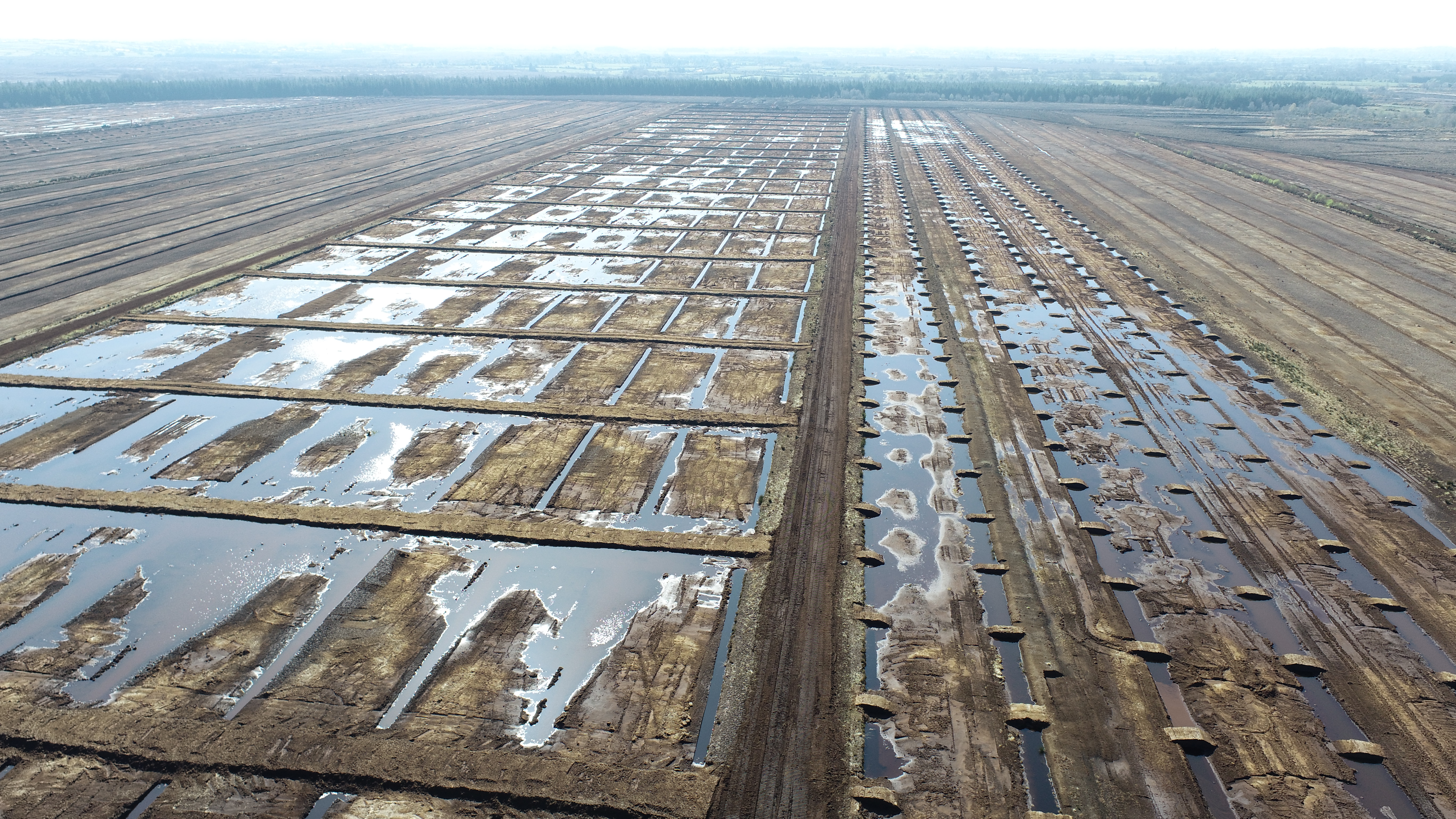Blog Archives
Post navigation

Balfour Beatty VINCI
With ArcGIS in a Managed Cloud Services environment we are managing the construction of one of Europe’s most challenging rail infrastructure projects.
Through an ArcGIS Managed Cloud Services agreement with Esri UK, the long-established joint venture Balfour Beatty VINCI launched 48 custom apps, dashboards, story maps and geospatial information tools for 2,500 users within just twelve months. These ArcGIS solutions are helping the organisation manage costs, protect workers and improve scheduling to keep the delivery of HS2 firmly on track.
ArcGIS web apps provide discrete groups of users with easy access to the geospatial data they need to work efficiently
ArcGIS Dashboards gives senior managers instant visibility of project data so they can better coordinate the activities of multiple teams and subcontractors
ArcGIS StoryMaps explains the significance of key project activities, to keep thousands of employees, subcontractors and partners informed
The Challenge
Balfour Beatty VINCI (BBV) is responsible for delivering the longest section in the first phase of HS2, the UK’s new high speed rail link to the north of England and one of the most challenging railway projects currently underway in Europe. The organisation needs to design and build 80 km of state-of-the-art rail infrastructure, comprising 66 overbridges, 42 viaducts, 35 cuttings, 33 km of embankments and four motorway crossings.
To help it coordinate and deliver this huge feat of engineering, BBV wanted to be able to store all of the geospatial data relating to all aspects of the project in one place, and create tailored apps and dashboards to make it available to everyone, including subcontractors and partners. The project would involve teams across dozens of disciplines from designers and engineers to ecologists, but while they would all be fulfilling different roles, they would all need to use much of the same geospatial information to make informed decisions.
“Our GIS platform is being monitored and maintained by experts who really understand geospatial data, can react quickly to any issues and have the knowledge to answer any questions that we might have."
Faisal Khan, GIS Manager, Balfour Beatty VINCI
The Solution
BBV evaluated multiple different geographic information system (GIS) solutions, selecting Esri’s ArcGIS suite because it provides the versatility that the business needs to create a variety of solutions for different groups of users. From the outset, BBV opted to use ArcGIS in a Managed Cloud Services environment, to remove the need for on-premise IT infrastructure. In doing so, it gained peace of mind from knowing that the GIS platform is being constantly monitored and supported by Esri UK’s GIS experts.
“The biggest benefit of an Esri UK Managed Services contract is the support,” says Faisal Khan, GIS Manager at BBV. “Our GIS platform is being monitored and maintained by experts who really understand geospatial data, can react quickly to any issues and have the knowledge to answer any questions that we might have.”
Within twelve months, BBV created 15 interactive ArcGIS apps, 14 ArcGIS Dashboards, 8 ArcGIS StoryMaps and 11 other geospatial tools. In total, within the first year, BBV amassed over 2,500 ArcGIS users. The majority of the ArcGIS apps and dashboards have been developed for specific teams, giving them the precise functionality that they need to undertake their roles as efficiently as possible. The ArcGIS StoryMaps often accompany dashboards and are used to give employees, subcontractors and partners a shared understanding of importance aspects of the project, such as achieving a net zero impact on biodiversity. BBV also uses ArcGIS Pro to create maps for the community engagement team, helping it to advise local people about road closures and works in the region.
Benefits
Timely design changes to reduce excess costs
Through the use of ArcGIS, BBV can make up-to-date information from ground investigations and site surveys available to designers more promptly. This enables potential issues, such as unexpected ground contamination, to be captured and incorporated into designs earlier, rather than having last minute changes that could be more costly. “You can never completely eliminate the need for design changes on a project as large and complex as HS2, but if you remove issues before construction work starts on site, it helps to keep the project within the tight construction budgets,” Khan says.
Improved health and safety on construction sites
ArcGIS helps to improve health and safety by enabling employees and subcontractors to view the geographic context of sites, alongside computer-aided design (CAD) plans and other project data on potential hazards, all in one place, before they go there. In addition, senior managers use an ArcGIS dashboard to view scheduled works at each location along the railway route within the next four weeks. The dashboard automatically creates an alert if two contractors or two activities are scheduled simultaneously in the same location, so managers can consider safety implications and reschedule activities to protect workers if necessary.
Informed decision making to keep the project on schedule
The tailored ArcGIS apps and dashboards give different groups of users the information that they need to make well-informed planning decisions and help keep the complex, multi-phased project on schedule. For example, employees can use ArcGIS to click on land parcels, see what land is in BBV possession and where land access is needed, so that the necessary acquisitions and access permissions can be secured well ahead of time, to prevent unnecessary delays. Equally, employees can refer to a dashboard to see historic weather patterns, and use this insight to plan the best times for works to take place.
Effective coordination of hundreds of teams
The suite of ArcGIS solutions helps BBV to coordinate the work of multiple subcontractors and prevent unnecessary duplication of activity. For example an ArcGIS web app developed for the ground investigations team shows where boreholes have already been drilled and where new ones are proposed, so different subcontractors do not drill in the same areas. “We can have hundreds of teams working along BBV’s section of HS2 simultaneously,” Khan says. “ArcGIS gives everyone shared access to the same information and prevents unnecessary duplication of tasks, which improves the overall efficiency of the project.”

Coastal Atlas Ireland
ArcGIS Hub is enabling us to transform recreational anglers into citizen scientists and encourage more people to play an active role in helping to conserve Ireland’s fish stocks.
An award-winning atlas, the Coastal Atlas of Ireland, features over 500 map images, created using ArcGIS software. Colourful, detailed and intriguing, the maps engage readers’ interest in a wide range of topics and improve understanding of issues that will shape Ireland’s coastline and coastal communities for decades to come.
ArcGIS was used on the desktop to collate, analyse and manipulate data in different formats, from many sources
Sophisticated cartographic tools in ArcGIS allowed the creation of attractive, colourful and accurate maps
An ArcGIS StoryMap adds value by enabling people to interact with the maps themselves online and delve into more detail
The Challenge
Creating an atlas of the coastline of the whole island of Ireland was a long-standing ambition of Robert Devoy. He assembled a team of co-editors, including Val Cummins, Barry Brunt, Darius Bartlett and Sarah Kandrot, and invited people from Ireland and beyond to contribute information to the atlas based on their areas of expertise. The contributors included academics across the fields of geography, ecology, climate change, geology, geomorphology, marine environments, industry, economics, culture and heritage.
“We wanted to bring together a huge variety of coastal data from across the whole of academia and present it in a way that would be accessible and meaningful for the general public,” says Sarah Kandrot, co-editor and cartographer. “Because the atlas has explicitly all-island coverage, this often meant we had to bring together datasets that originated in each of the two jurisdictions, with all the challenges of data (non-) interoperability that implies.”
ArcGIS has enabled me to bring information to life and create maps to help people understand a variety of coastal issues.
Sarah Kandrot – co-editor of the Coastal Atlas of Ireland
The Solution
Kandrot selected Esri’s ArcGIS solution and utilised this software on the desktop to create over 500 clear, attractive and informative maps to illustrate the atlas. The use of a professional geographic information system (GIS) enabled Kandrot to easily combine vast datasets, often in different formats, from a wide variety of sources, ranging from individual researchers to government agencies in the Republic of Ireland and Northern Ireland, as well as the EU. She could use specialist geospatial tools within ArcGIS to analyse and filter the data, view patterns and highlight key coastal issues.
Addressing an incredibly diverse range of topics, the maps illustrate everything from how critical habitats for seabirds are diminishing to how coastal communities were impacted by the great Irish famine of 1845-1852. Some maps plot the locations of coastal leisure facilities, such as golf courses and blue flag beaches, while others show the extent of search and rescue operations, the urbanisation of coastal cities over successive decades and the sites of prehistoric tombs and standing stones.
Following the publication of the Coastal Atlas of Ireland, Kandrot used Esri’s ArcGIS Online to create a StoryMap, enabling people explore some of the maps and themes featured in the publication in more detail online. Comprising interactive maps, stunning imagery from professional and amateur photographers, and narratives written by subject experts, the StoryMap can be accessed free of charge by anyone. “The ArcGIS StoryMap provides extra information and an added dimension that the printed publication cannot give,” Kandrot says. “It is a great complement to the atlas.”
The maps in the printed publication and the StoryMap put the facts about climate change into context and promote discussion about what we must do to manage it.
Sarah Kandrot- co-editor of the Coastal Atlas of Ireland
The Benefits
Top quality illustrations for a top quality publication
The maps created with ArcGIS are an essential part of the Coastal Atlas of Ireland. Produced in full colour, the maps add clarity and interest to the atlas and have contributed significantly to its success. In the 2021 An Post Irish Book Awards, the atlas was named the Journal.ie Best Irish Published Book of the Year.
Complex, professional maps created easily
The use of ArcGIS enabled Kandrot to easily consolidate data from the Republic of Ireland and Northern Ireland and work with data in different formats to create consistent all-island maps. She could also manipulate the data and filter out the data that she didn’t need, in order to focus on coastal areas specifically. For example, she was able to use ArcGIS to show the locations of tower houses (15th-17th century fortified residences) that are within 5km of the coast.
Improved awareness of all-Ireland coastal issues
The diversity of the maps in the atlas helps to arouse the general public’s interest in different aspects of Ireland’s coast and draw attention to a wide range of topics, affecting coastal areas around the whole island of Ireland. One unusual and fascinating map shows the thousands of miles travelled by five seals around the coast of Ireland and beyond. “ArcGIS has enabled me to bring information to life and create maps to help people understand a variety of coastal issues,” Kandot says.
Bonus information to explore beyond the pages
The ArcGIS StoryMap enables people to delve into more detail about some of the topics covered in the atlas, providing significant added value from the project. For example, people can zoom into maps of Machair habitats, one of the rarest kinds of coastal habitat in Europe, to see satellite imagery of what they look like, as well as where they are. People can also use the StoryMap to compare different sets of data on one screen, something that is more difficult to do by flicking over pages in the printed publication.
Clear understanding of the challenges for the future
The Coastal Atlas of Ireland, together with the StoryMap, shine a light on climate change, the impact it is already having on Ireland’s coast and how we must adapt to it. “The maps in the printed publication and the StoryMap put the facts about climate change into context and promote discussion about what we must do to manage it,” Kandrot says. “The huge amount of interest that we have seen in the Coastal Atlas of Ireland gives me hope for the future that people will take coastal climate change seriously.”

Fusion
ArcGIS is the core asset management system that is enabling us to coordinate the activities of 60+ contractors and subcontractors and deliver a major infrastructure project efficiently
In a highly complex and large-scale, multi-disciplinary ground works project, the joint venture organisation Fusion needs to collaborate effectively with over 60 contractors, subcontractors and third parties. It uses ArcGIS through a Managed Cloud Services agreement to help it connect people with up-to-date data, improve the efficiency of key business processes and manage costs and resources effectively.
The Esri UK Managed Cloud Service frees up time in Fusion's GIS team for the development of new GIS apps and services
750 people from 60+ organisations use the ArcGIS web portal to access & share ecology, archaeology, land and development data
Bespoke apps developed using ArcGIS Survey123, ArcGIS Collector and ArcGIS Dashboards improve project efficiency
The Challenge
Fusion was appointed in 2016 to carry out essential preparatory works along a 100 km section of the route for the new High Speed 2 (HS2) railway line. The contract includes everything from clearing sites and diverting utilities to creating new habitats for newts and investigating archaeology.
The joint venture’s vision is to connect people, but it soon became clear that this was going to be a particular challenge on the HS2 project. Over sixty different contractors and subcontractors with different specialisms were involved in undertaking engineering, ecology and archaeology surveys and implementing ground preparation and remediation works. Fusion needed to be able to share up-to-date information with people from all of these separate companies, as well as HS2, Natural England and the civil engineering organisation leading the next stage in the railway’s construction.
“In a project like HS2 that involves a vast number of contractors and other third parties, ArcGIS keeps everyone in the loop. Multi-disciplinary teams from many different companies can all share the same data and collaborate effectively to complete work to a high standard."
Tom Wicks, BIM manager, Fusion
The Solution
Fusion selected Esri’s ArcGIS solution, opting to subscribe to a Managed Cloud Service provided by Esri UK. ArcGIS quickly became Fusion’s main asset management system for the HS2 project, enabling Fusion to better manage and share all of the building information management (BIM) data that it needs to coordinate the project, as well as deliver contractually to HS2.
Now, Fusion’s core ArcGIS web portal is used by over 750 users from Fusion, its contractors, HS2 and other third parties. With new data added daily, ArcGIS allows Fusion to manage, visualise and share over 500 information layers on everything from ecology and archaeology to flood zones and land ownership. Everyone can see the same up-to-date data, zoom into a specific area on the digital map and turn on the layers, to better understand where preparatory works are needed, why they are needed and when these works have been completed.
In addition to the main ArcGIS web portal, Fusion has developed a number of smaller ArcGIS web apps to meet the needs of specific teams or support discrete business processes. One of these apps allows Fusion to manage land access and pass on land ownership to the principal contractor responsible for managing the next phase in the construction of HS2. Another app, the Ecology Viewer, allows people to view, in one place, all the data collected in ecology surveys by multiple organisations. It enables everyone to more easily see, for example, the species of bat that roost in the vicinity of the HS2 route, the badger sets that need to be relocated and the nest boxes that have been installed for barn owls.
Graham Starling, Information Manager at Fusion, says: “Esri UK has provided an excellent level of service throughout the project lifecycle, from being adaptable to changing requirements during project implementation and providing efficient and effective remedial actions when issues arose during delivery, through to providing consultation and recommendation during demobilization and archiving. I would highly recommend this ArcGIS managed service for other similar projects.”
“Esri UK has provided an excellent level of service throughout the project lifecycle….”
Graham Starling, Information Manager, Fusion
Benefits
Effective collaboration between people in 60+ organisations
ArcGIS significantly improves collaboration on this large-scale project by making it easy for people across many different organisations to share and view up-to-date information. With a better understanding of the area, everyone involved can take appropriate measures to protect heritage sites, avoid disturbing animals during key breeding times, and abide by the law by not inadvertently crossing land that is private. “In a project like HS2 that involves a vast number of contractors and other third parties, ArcGIS keeps everyone in the loop,” says Tom Wicks, BIM manager at Fusion. “Multi-disciplinary teams from many different companies can all share the same data and collaborate effectively to complete work to a high standard.”
Improved cost and resource management
By using ArcGIS to undertake geospatial analysis, Fusion is better able to estimate resource requirements for specific works and manage costs across the entire contract. For example, the organisation uses ArcGIS to analyse the density of bats and trees in particular locations and make comparisons between different sections of the route. It can then share this data with HS2 and use it internally to help it accurately gauge the cost of tree works or ecology interventions in different locations, and allocate the required resources based on up-to-date data from the field.
Greater efficiency in key business processes
The small GIS team at Fusion has been able to develop a series of ArcGIS apps that improve the efficiency of key business processes. For example, it has created a form-based app using ArcGIS Survey123 that enables people to capture details about any works needed and insert ArcGIS polygon drawings from the web portal. This detailed ground plan can then be shared with HS2 and other partners, within ArcGIS, accelerating decision making and works scheduling. “Having an Esri UK Managed Cloud Service frees time in the GIS team so that we can do geospatial analysis and build high value GIS apps that improve efficiency across the whole project,” says Wicks.
Faster resolution of snagging issues
As in all large projects of this type, small issues will inevitably arise that need attention, such as broken fence panels. In the past, these snagging issues were recorded in different ways, by different companies, in different spreadsheets without accurate location data. Now, information is recorded in a consistent way, by all parties, using ArcGIS Collector, and the data can be viewed by Fusion in near real-time on an ArcGIS Dashboard. “Having this data in real time, means snags can be sorted as soon as possible,” Wicks explains.

Inland Fisheries Ireland
ArcGIS Hub is enabling us to transform recreational anglers into citizen scientists and encourage more people to play an active role in helping to conserve Ireland’s fish stocks.
How can anyone possibly know how many fish are being caught or released by up to 250,000 recreational sea anglers around 3,000 km of coastline? Charged with answering this question, Inland Fisheries Ireland has created a solution based on ArcGIS Hub that is hooking the attention of the angling community and turning anglers into citizen scientists.
ArcGIS Survey123 allows recreational sea anglers to gather and upload data about the fish they catch and release, using any device
ArcGIS Hub Premium presents anglers with their own personalised dashboards, on which they can visualise their fishing successes over time
ArcGIS Online consolidates the data that Inland Fisheries Ireland needs for EU reporting and displays it on a secure management dashboard
The Challenge
To help safeguard fish stocks in European waters and protect marine eco-systems, the European Union (EU) needs to have accurate information about the volume (number and weight) of key fish species caught annually in European waters. Consequently, all EU member states are now required to report, not only on commercial fishing, but also on recreational sea angling.
As the organisation responsible for recreational angling in Ireland, Inland Fisheries Ireland needed to find a way to gather and share accurate data from a representative proportion of the 250,000 anglers who fish in many locations, along more than 3,000 kilometres of coastline. To complement sea angling data gathered by the Inland Fisheries Ireland survey team, a further approach was needed that would allow and encourage anglers to self-report their catches.
ArcGIS will enable us to recruit lots of anglers as citizen scientists and crowdsource the large volume of data that we require for EU reporting.
William Roche – Senior Research Officer, Inland Fisheries Ireland
The Solution
Inland Fisheries Ireland had been using geographic information system (GIS) solutions from Esri for many years and already had a mobile ArcGIS app that was used by deep-sea charter angling boat skippers for reporting for a Bluefin tuna catch, tag and release programme. With this experience, the organisation came up with a concept for an inclusive GIS-based survey that would engage anglers as citizen scientists. It then appointed consultants from Esri Ireland’s Professional Services group to act as advisors and help it deliver this novel method of marine data collection.
A key component of Irish Marine Recreational Angling Survey (IMREC), the GIS-based solution includes an ArcGIS Survey123 app, which anglers use on their mobile phones, tablets or computers, to capture data on how many fish they caught, what size and species they were, how many fish they released and how long they fished for. All the data captured is then transferred automatically, with no manual intervention, to Esri’s ArcGIS Hub Premium, a community data sharing platform that allows multiple stakeholders to contribute and view selected data online. A management dashboard in the Hub allows Inland Fisheries Ireland to monitor data collection activities, see estimated catch rates and identify patterns in the species, volumes and weight of fish caught.
In addition, all of the anglers that join the scheme have a personalised dashboard within ArcGIS Hub Premium on which they can see the data that they have contributed, whether they are shore anglers, small boat anglers or anglers who charter larger deep-sea vessels. Anglers can use their personalised dashboard to create online diaries of their own fishing activities and look back over time to understand where and when they had the most success. Personalised dashboards are not shared with other anglers or people outside of Inland Fisheries Ireland, so anglers can protect the secrecy of their favourite and most successful fishing spots.
With more people collecting data, we will be able to build up a better picture of the state of fish stocks off Ireland’s coast, particularly for anglers.
William Roche - Senior Research Officer, Inland Fisheries Ireland
The Benefits
More people proactively engaged in data collection
Inland Fisheries Ireland expects to be able to encourage large numbers of anglers to take part in the IMREC diary-based survey, partly because the Survey123 app is very easy for anglers to use, on any device. In addition, ArcGIS Hub Premium can be scaled up easily to accept data up-loads from more and more participants, allowing Inland Fisheries Ireland to gradually expand the scheme over time. “ArcGIS will enable us to recruit lots of anglers as citizen scientists and crowdsource the large volume of data that we require for EU reporting,” says William Roche, Senior Research Officer at Inland Fisheries Ireland. “With more people collecting data, we will be able to build up a better picture of the state of fish stocks off Ireland’s coast, particularly for anglers.”
Effective retention of anglers in the crowd-sourcing scheme
Through the development of personalised dashboards in ArcGIS Hub Premium, Inland Fisheries Ireland has created an effective way to retain the interest and involvement of anglers in the IMREC survey. Anglers are often keen diarists, and Inland Fisheries Ireland anticipates that they will enjoy using their dashboards to record and visualise their fishing success month after month. “The ArcGIS personalised dashboards will help to make the recording of data a habitual activity for anglers,” Roche explains. “We hope anglers will enjoy entering their catch data and take pride in their role as observers and stewards of Ireland’s fish stocks.”
Accurate, consistent data collected from all around Ireland
As all anglers, all around the country, are using the same Survey123 app to record their data, Inland Fisheries Ireland can have greater confidence in the accuracy and consistency of the data collected. The app accurately records location data, and survey questions can be easily amended if needed. The EU is particularly interested in data on cod, pollock, sharks, rays, sea bass and highly migratory species such as tuna, but Survey123 can be configured to capture data on other species too, giving Inland Fisheries Ireland flexibility for the future.
Supplementary data to support EU reporting requirements
Most significantly, ArcGIS has provided Inland Fisheries Ireland with a feasible and affordable way to capture additional data to complement the other data collected for the EU. Citizen science like this provides broad spatial coverage all around the coastline of Ireland. Linked with data from face-to-face interviews with anglers, the GIS solution minimises data handling and automatically displays reporting information on the management dashboard, which will enable Inland Fisheries Ireland to comply with EU data collection requirements in a very efficient way.

Glasgow City Council
ArcGIS is playing a pivotal role in Glasgow City Council’s response to COVID-19, enabling the council to share understanding of the spread of virus, the needs of vulnerable people and the success of the vaccination roll-out.
As soon as the first COVID-19 cases emerged in Scotland, Glasgow City Council turned to GIS to help it gain answers to questions that had never been asked before. Using Esri’s ArcGIS Dashboards and analysis, the council was able to gain a deeper insight into the challenges of the pandemic and share this understanding to improve the delivery of services for citizens.
Geospatial analysis undertaken with ArcGIS shows where vulnerable people live so the council can direct the necessary support to the right locations
Accurate data on COVID-19 cases and vaccinations feed into ArcGIS Online daily, giving the council a clear understanding of the fast-moving situation in the city.
ArcGIS Dashboards display hotspots by neighbourhood enabling the council to implement targeted interventions to reduce community transmission
The Challenge
The first case of COVID-19 was detected in Scotland on 1st March 2020. Within just short three weeks, this deadly coronavirus had begun to spread through community transmission within Scotland; the first patient with COVID-19 had died in a Scottish hospital; and the First Minister had announced unprecedented lockdown measures. Glasgow City Council, like other local authorities throughout the UK, needed to react quickly to this rapidly escalating public health crisis and provide effective support for Glasgow’s 600,000 citizens.
It soon became clear that the council could maximise the use of its data assets to inform the introduction of new services that were being set up in response to the pandemic. “The council had invested heavily in data analytics and data science over the preceding ten years and so was in a good place to respond quickly to the challenge,” says Stephen Sprott, Open Data and Innovation Project Manager at Glasgow City Council. “The data team was asked what solutions it could provide that would help the council to meet the needs of local people, especially vulnerable groups and vulnerable individuals in the community.”
“ArcGIS gives us the ability to visualise a wealth of detailed information and use this insight to make the best decisions to support communities and vulnerable people in Glasgow.”
Piero Matassoni, GIS Officer, Glasgow City Council
The Solution
Experienced in the use of Esri’s ArcGIS solutions, the council’s data team began by using ArcGIS on the desktop to perform advanced geospatial analysis and geocoding. While the official number of people who needed to shield in the city was 24,000, this ArcGIS analysis revealed that there are nearly 100,000 potentially vulnerable citizens, who are registered as disabled, in receipt of benefits or receiving support from social workers, for example. The council used ArcGIS to produce density maps to identify where large numbers of these vulnerable people live and where support services should be focused.
The council then used ArcGIS Online to create a series of highly visual, interactive dashboards to display COVID-19 information internally in a format that is easy for anyone to understand. Critically, the dashboards combine the council’s own data with the latest data from NHS National Services Scotland and Public Health Scotland about current levels of COVID-19 cases and vaccinations across the city, broken down into local areas. This vital epidemiological and health information is streamed into ArcGIS Online every night, with no manual intervention, providing the council’s planning and strategic teams with rapid access to accurate, up-to-date intelligence.
Glasgow City Council realised that other local authorities and public sector bodies also needed access to up-to-date information about the pandemic and stepped forwards to share its expertise. Its ArcGIS Online solution subsequently evolved into a template for use across the whole of Scotland and was shared with other members of local and national resilience groups including councils, police and NHS services.
“COVID-19 is not going away anytime soon so we need to continue to use ArcGIS and data analysis to deliver practical solutions to managing this ongoing public health crisis.”
Stephen Sprott, Open Data and Innovation Project Manager, Glasgow City Council
Benefits
Real-time insight to inform the delivery of services for citizens
The use of ArcGIS enables Glasgow City Council to visualise, in near real-time, at neighbourhood level, how COVID-19 is impacting citizens. With this improved understanding of fast-changing situations, the council can ensure that the right support services are delivered in the right locations. “ArcGIS gives us the ability to visualise a wealth of detailed information and use this insight to make the best decisions to support communities and vulnerable people in Glasgow,” says Piero Matassoni, GIS Officer at Glasgow City Council.
Targeted testing to reduce COVID-19 transmission
Using the ArcGIS Dashboards, senior managers within the council can monitor areas of the city with rising levels of COVID-19 cases, identify outbreaks of concern and then target these specific areas with interventions to help reduce community transmission. For example, when a spike in cases occurred in one particular area of the city, the council used ArcGIS Dashboards to decide where to locate intensive community testing sites (before home testing was widely available) to help it identify asymptomatic cases and stem the increase in the spread of the disease.
Effective, comprehensive roll-out of COVID-19 vaccines
The intelligence provided by ArcGIS analysis is also helping to ensure the success of the vaccination programme in Glasgow. For example, the council can use ArcGIS to track take-up of the vaccine by area, age groups and ethnicity. “ArcGIS gives us a real-time view of where the gaps are and where the vaccine programme might be lagging behind,” Sprott says. “The council can then use this information to influence where to set up additional drop-in, mobile and pop-up vaccination facilities and where to increase publicity to encourage more people to get vaccinated.”
Improved management of ongoing COVID-19 risks
The council now uses ArcGIS to analyse anonymised ‘track and trace’ data on the leisure facilities, schools, hospitality businesses, places of worship and retail sites visited by people who have contracted COVID-19. The council’s environmental and public health teams can then focus their efforts on visiting these high risk premises to check that COVID-19 secure measures are being followed. Summing up, Sprott says, “COVID-19 is not going away anytime soon so we need to continue to use ArcGIS and data analysis to deliver practical solutions to managing this ongoing public health crisis.”

Westminster City Council
Our innovative user of GIS has helped deliver an innovative approach to waste services procurement which could contribute to avoided costs of £2 million per year.
Westminster City Council has made innovative use of GIS to help ensure that new tenders for its £225 million waste disposal contracts offer the best possible value for money. It anticipates that its new approach to waste services procurement could contribute to avoided costs of up to £2 million a year.
ArcGIS allows the council to make more informed decisions about supplier appointments
The GIS-enabled project has given the council rapid insight into complex public service requirements
By using ArcGIS, the council avoided the need to pay external consultancy fees of £20,000
The Challenge
Every year, a staggering 190,000 tonnes of rubbish are generated by households and businesses in the City of Westminster, enough to fill the Royal Albert Hall 26 times over. With the two main contracts for the recycling and disposal of this waste coming up for renewal, the council’s cleansing department wanted to make absolutely certain that it selected suppliers who could offer optimum value for taxpayers’ money.
With growing congestion on London’s roads along with high fuel costs, the council realised that travel time to and from vehicle depots, waste treatment sites and recycling facilities was a significant factor influencing the cost of waste disposal services. So, in its tender documents for the new contracts, it wanted to encourage bids from contractors who had sites within a short drive-time of the centre of the borough.
The key challenge for the cleansing department was how to accurately measure drive-times for its waste collection vehicles, on busy streets, and along hundreds of alternative routes, at different times of the day. The council initially approached a firm of transportation consultants, which quoted £20,000 to undertake a drive-time analysis project. However by consulting the council’s internal geographic information system (GIS) department, the cleansing department realised it had an alternative means of addressing the challenge, using existing resources.
“ArcGIS Online helped Westminster City Council to make evidence-based decisions and ensure the most effective use of public funds in the management of waste services.”
Jarno Stet, Waste Services Manager, Westminster City Council
The Solution
Westminster City Council has been using solutions from Esri’s ArcGIS platform for many years and the GIS team had recently begun to explore ArcGIS Online. Following a conversation with the council’s cleansing department, the GIS lead at Westminster City Council used ArcGIS Online and network routing data for central London to put together an initial proof of concept, based on the average drive-times of cars. It took him just 15 minutes and even with this first ArcGIS Online map, the cleansing department was extremely impressed.
Next, the council’s GIS team incorporated GPS data from its waste collection trucks, which gave it the actual, average speeds of its own vehicles, at different times in the day. It then worked closely with the cleansing department to analyse the data and produced a map (in web and pdf formats), showing a 35-minute drive-time boundary from Marble Arch, the centre of the borough. “ArcGIS Online makes it extremely easy to adjust and produce maps, so the cleansing department could experiment with different drive-time limits and drive-time boundaries at little cost and in little time,” says Jarno Stet, Waste Services Manager at Westminster City Council.
“ArcGIS will continue to play an important role in future waste contract procurements, as well as similar projects in other departments, giving us long-term value for money”
Jarno Stet, Waste Services Manager, Westminster City Council
Benefits
Westminster City Council embedded the ArcGIS Online map into its tender documents for new waste collection contracts enabling it to give favourable consideration to bids from contractors with sites within the delineated 35-minute drive-time area. This focused procurement approach delivered significant benefits including:
Evidence-based decision making
With its new insight into the optimal operation of waste collection vehicles, the council could set meaningful criteria for prospective new contractors and make appointments based on facts. As Stet says, “ArcGIS Online helped Westminster City Council to make evidence-based decisions and ensure the most effective use of public funds in the management of waste services.”
Value for money for taxpayers
By appointing contractors with the closest sites, Westminster City Council minimised the cost of fuel and employee time, and ensured that contracts represented the best possible value for taxpayers’ money. Stet explains: “The cost implications of selecting contractors with waste treatment sites with unacceptable travel distances could add up to £6 per mile. When this figure is multiplied by the number of miles travelled every year, the number of vehicles we operate, staff labour and overtime cost, the total annual avoided cost could be as much as £2 million."
Fast insight into complex challenges
ArcGIS Online gave the council a fast and flexible solution to its challenge, enabling it to find the answers to its drive-time question within the tight timescale of the procurement process. Using ArcGIS Online, the GIS lead was able to conduct drive-time analysis and produce a detailed map in minutes, for an expenditure of around 30 pence in user credits.
Return on annual investment in GIS
Whereas external consultants had quoted £20,000 to perform drive-time analysis, Westminster City Council was able to complete the project itself, using its existing licence for ArcGIS Online and the skills of in-house staff. With the consultancy fee savings from this one small project, the council offset the entire GIS software spend for the year. “ArcGIS will continue to play an important role in future waste contract procurements, as well as similar projects in other departments, giving us long-term value for money,” Stet says.

Ricardo
Our migration to ArcGIS Pro is helping us to create and share high quality data sets on air quality and greenhouse gas emissions
Ricardo has been using ArcGIS solutions to help it create and publish data on air quality and greenhouse gas emissions for many years. The migration from ArcMap to ArcGIS Pro has enabled it to accelerate complex data analyses and share its critical environmental data more easily with government clients.
ArcGIS Pro makes the latest tools, functionality and data sets more accessible to users in one place
ArcGIS Notebooks, integrated in ArcGIS Pro, allows the automation of complex data analyses
cGIS Pro is tightly connected with ArcGIS Enterprise and ArcGIS Online, making it easier to publish work
The Challenge
At a time when the world urgently needs to address the climate change emergency, Ricardo is playing a vital role in helping governments to understand changes in air quality and greenhouse gas emissions. The consultancy’s Energy & Environment division creates and shares data that can be used by air quality modellers, academics and policy makers to better understand climate change challenges and formulate the best new policies to improve public health. Its work is precise, detailed and specialised, demanding a high level of accuracy.
ArcGIS Pro is helping us to create high quality data that can be used by governments to help improve the world we live in for us, our kids and future generations.”
Ioannis Tsagatakis - Principal Environmental Consultant, Ricardo
The Solution
Ricardo’s services in the field of air quality and greenhouse gases have, for many years, depended on the use of ArcGIS solutions. Wanting to take advantage of the latest ArcGIS technology, the company decided to migrate to ArcGIS Pro for its desktops. It already used ArcGIS Enterprise, as well as ArcGIS Online, for sharing data internally with colleagues and externally with clients and considered the migration to ArcGIS Pro to be the logical next step.
Undertaking the migration during the COVID-19 pandemic created a few unexpected challenges for Ricardo. In particular, it discovered that it needed to upgrade its workstation graphics cards to optimise the performance of ArcGIS Pro, but there was a global shortage of graphics cards at the time. It also took users a while to adapt to the new desktop solution, but once they were familiar with the new user interface they found it easy to use.
Now, Ricardo uses ArcGIS Pro, instead of ArcMap, to analyse rasterised data on air quality, as well as emissions data, on the desktop. It also uses ArcGIS Pro to prepare and publish data via ArcGIS Online and ArcGIS Enterprise. Principal Environmental Consultant, Ioannis Tsagatakis, says: “ArcGIS Pro has good connectivity with ArcGIS Enterprise and ArcGIS Online, making it easier for us to share our work.”
Ricardo makes particular use of ArcGIS Notebooks, a solution that is integrated into ArcGIS Pro and includes functionality for data cleaning and transformation, numerical simulation, statistical modelling and machine learning. ArcGIS Notebooks are now used to automate complex scripting tasks, rather than using Esri’s legacy ArcInfo Workstation product. Data can be more easily transferred from ArcGIS Notebooks to ArcGIS Pro and published, improving the management of data.
Using the data processing capabilities of ArcGIS Pro makes our work as efficient and error free as possible.
Ioannis Tsagatakis - Principal Environmental Consultant, Ricardo
The Benefits
All the tools that users need, in one place
Everything that employees used to do with ArcMap can be done with ArcGIS Pro, but now all the tools and features are easier to find and use. Consequently, Tsagatakis believes it will be much simpler for new users to start using ArcGIS to undertake projects for clients, to the high standard that is necessary. “Our work estimating air quality is vitally important,” he says. “ArcGIS Pro is helping us to create high quality data that can be used by governments to improve the world we live in for us, our kids and future generations.”
Efficient large-scale data processing
Using ArcGIS Notebooks in ArcGIS Pro, Ricardo can apply scripting to automate highly complex data analyses and create cost-effective, repeatable processes. For example, the company is using ArcGIS Notebooks to allocate traffic emissions to Ordnance Survey’s Open Roads data, in what is a complex, enormous and annual project funded by the Department of Business, Energy and Industrial Strategy (BEIS) and the Department of Environment, Food and Rural Affairs (Defra). “Using the data processing capabilities of ArcGIS Pro makes our work as efficient and error free as possible,” Tsagatakis explains. “It enables us to complete high quality projects for our government clients within the time and budget they have available."
Simplified data sharing with government clients
The tight integration of ArcGIS Pro with ArcGIS Enterprise and ArcGIS Online makes it far easier for Ricardo to publish its data and share it with its clients, including Defra and BEIS, as well as international clients including, most recently, government departments in Cyprus and Peru. It used ArcGIS Pro to create the spatial components of a tool for viewing heat demand data across different postcodes and regions of Cyprus. It then published this data online, using ArcGIS Online, enabling people to explore the data on interactive maps.
Easy access to contextual maps and data
With ArcGIS Pro, it is easier for users to access new base maps and add data from the Esri Living Atlas to enhance projects. For example, when Ricardo was asked to review agriculture emissions data from the EU member states, it was able to quickly download land cover maps from the Living Atlas, which enabled it to see patterns of agriculture emissions against land type in ArcGIS Pro and visually verify the accuracy of the data. As Tsagatakis says, “Being able to add land cover data and other data sets to our projects, with just a few clicks, is one of the beautiful things about using ArcGIS Pro."

Bord na Móna
We have invested in ArcGIS within the field and on our desktops to inspect contractors' work, track quality control trends and contribute to the success of government energy-saving programmes.
Bord na Móna is actively engaged in projects to restore and rehabilitate 33,000 hectares of peatlands. It uses ArcGIS to design the most appropriate rehabilitation measures and then implement a wide range of measures as quickly and efficiently as possible.
Ecologists and GIS specialists use ArcGIS Pro and SWEET for ArcGIS on the desktop to prepare detailed rehabilitation plans
Surveyors and engineers use ArcGIS online and in the field to ensure restoration measures are implemented accurately
Senior managers use ArcGIS dashboards to monitor the progress of up to 19 simultaneous rehabilitation projects per year
The Challenge
Bord na Móna is proud of the role it is playing in helping Ireland to achieve a net carbon zero future. Now that commercial peat extraction has ceased, the organisation is leading the way in restoring and rehabilitating precious peatland ecosystems. Recognising the vital importance of peatlands for carbon storage and ecosystem services, it has set itself the ambitious target of regenerating 33,000 hectares of peatland in just five years via the Peatland Climate Action Scheme, funded by the Government of Ireland and Bord na Móna.
Using ArcGIS, we can quickly visualise the existing conditions across thousands of hectares of bogs using numerous datasets and design and implement the most appropriate rehabilitation measures to restore peatland function and deliver climate action benefits.
Mark McCorry – Ecology Manager, Bord na Móna
The Solution
Having used geographic information system (GIS) technology from Esri for around twenty years to support its former peat extraction operations, Bord na Móna is now using Esri’s ArcGIS solutions for its rehabilitation activities.
For each bog identified for rehabilitation, GIS specialists and ecologists use the desktop solution ArcGIS Pro and 3D spatial analysis tools to examine the ground level and create detailed, map-based rehabilitation plans. The ecology team also uses the web-based editing solution Sweet for ArcGIS, to accelerate the editing and amendment of these plans, before sharing with the engineering team.
Once a rehabilitation scheme has been agreed, the map-based plan is uploaded to ArcGIS Online, where employees in environmental, survey and engineering teams can view it on a range of ArcGIS web apps and field apps to help them implement the recommended measures. For example, surveyors view the ArcGIS-based maps on GPS-enabled tablets while in bogs to accurately mark out on the ground where different measures, such as drain blocks, should be located. In very remote areas, with little or no mobile coverage, maps can be downloaded to mobile devices and updates synchronised later.
During rehabilitation projects, the engineering team uses ArcGIS field apps to record the progress of different initiatives within a bog area on colour-coded maps of each site. This data, collected on maps in the field, feeds into a series of Esri operational dashboards in near real time. Senior managers within Bord na Móna can view these dashboards at any time to obtain an overview of progress on each site and reports for scheme regulators and third parties can be easily generated.
“ArcGIS is engrained in our bog rehabilitation process,” says Michael Lenihan, GIS Lead at Bord na Móna. “We have around 85 day-to-day users of ArcGIS either on the desktop, via the web or in the field.”
With ArcGIS Online, everyone sees the most up-to-date plans, whether they are working in the office or in a bog, and this helps to ensure that ecology plans are carried out as intended.
Michael Lenihan - GIS Lead, Bord na Móna
The Benefits
Appropriate rehabilitation measures identified
The use of ArcGIS gives ecologists the detailed insight they need to identify which rehabilitation measures will be most appropriate, not just on each bog, but within different parts of the same bog. Each bog can be quite different, with a variable environment and a mosaic of peat depths, hydrology, habitats and topography, meaning there will be different goals and outcomes. Plans designed by ecologists can comprise multiple interventions such as drain-blocking and bunding to optimise hydrological conditions to re-wet peat. “Using ArcGIS, we can quickly visualise the existing conditions across thousands of hectares of bogs using numerous datasets and design and implement the most appropriate rehabilitation measures to restore peatland function and deliver climate action benefits,” says Mark McCorry, Ecology Manager at Bord na Móna.
Accurate implementation of measures
Through the use of ArcGIS Online, Bord na Móna is able to ensure that all employees have access to the latest versions of each of its rehabilitation plans and supporting datasets. This helps to minimise miscommunication, allows constant updating, and eliminates mistakes in the implementation of measures. “Changes to schemes occur regularly,” explains Lenihan. “With ArcGIS Online, everyone sees the most up-to-date plans, whether they are working in the office or in a bog, and this helps to ensure that rehabilitation plans are carried out as intended.”
Efficient working in remote, wild landscapes
With bogs from Galway to East Kildare, employees are generally dispersed across the country and work in very remote, wild landscapes. The use of ArcGIS field apps eliminates the need for them to record information on paper and type it up later, saving time and improving the accuracy of data collection. For example, the environmental team uses ArcGIS Survey123 to record the locations of railway lines, pipes and machinery, left over from the industrial era, that need to be removed. As the data collected is captured immediately on ArcGIS dashboards, plans to decommission this equipment can be drawn up and enacted more efficiently.
Clear visibility of progress made
Bord na Móna is currently planning or implementing rehabilitation schemes on up to 19 sites per year. The Esri dashboards give senior managers clear visibility of the progress of all of these simultaneous projects, wherever they are happening in Ireland. The GIS team can also use the dashboards to generate automated, accurate reports for stakeholders, such as the Department of Environment, Climate and Communications, and the National Parks and Wildlife Service. “Without the dashboards, we would have to spend a lot of time producing pdf maps and reports,” Lenihan says. “Instead, we can output progress data in a matter of minutes.”

LSTC
Migrating from ArcMap to ArcGIS Pro has led to significant improvements in the way that we conduct asset surveys and develop feasibility studies for our clients.
The decision to migrate from Esri’s ArcMap to ArcGIS Pro and ArcGIS Online enabled LSTC to reenergise key business processes and streamline the way that it collects, analyses and shares data, from field to client. The electricity industry services provider can now operate more efficiently and avail of more extensive, accurate data to help it plan the best routes for new electricity lines.
ArcGIS Pro and ArcGIS Online enable route planners and environmentalists to plan new electricity routes more quickly and easily
The migration to ArcGIS Pro and ArcGIS Online was the springboard for the creation of streamlined business processes
Surveyors and inspectors use ArcGIS mobile solutions to collect accurate data, upload images and create maps in the field
The Challenge
LSTC specialises in the design and survey of overhead lines, underground cables and substation systems, and its teams of engineers, asset inspectors and planners need to collect data in the field on an almost daily basis. Previously, they used a custom-built solution, but this Windows-based data capture software didn’t enable them to upload images alongside survey data or draw maps while in the field. Digital maps, work schedules and pdf reports for clients all had to be created manually when employees returned to the office, in what were unnecessarily disjointed and time-consuming business processes.
“We started to understand the whole ArcGIS concept and how it could support our business in more ways..”
Martin Straker, Director and Founder, LSTC
The Solution
LSTC was already using Esri’s ArcMap solution to support route planning, but had not previously considered using geographic information system (GIS) technology to streamline its field-based operations. The company’s Director Martin Straker participated in a series of webinars about Esri’s full suite of ArcGIS solutions and, as he says, “This sparked our interest in using GIS more extensively. We started to understand the whole ArcGIS concept and how it could support our business in more ways.”
A few months later, LSTC took the decision to migrate to Esri’s ArcGIS Pro and ArcGIS Online, opening the door for the company to make greater use of ArcGIS tools across multiple teams within the business – in the field, desktop and online. Experts from Esri UK’s Professional Services team supported LSTC with the product migration, helping the company to optimise its use of ArcGIS Pro and ArcGIS Online and transform business processes.
Now, LSTC’s route planners, surveyors and inspectors use ArcGIS Pro instead of ArcMap to view environmental data, map existing and potential electricity transmission and distribution routes and gain a comprehensive understanding of potential constraints along the way. The team finds ArcGIS Pro much simpler to use, with a cleaner interface, easy-to-find tools and a seamless link between the desktop and ArcGIS Online. Users can more easily incorporate live content and up-to-date base mapping into projects, work on multiple maps simultaneously and save and reuse their own mapping templates.
LSTC has used ArcGIS Pro, ArcGIS Online, and ArcGIS mobile solutions to build seamless workflows. For example, surveyors and inspectors now use a combination of ArcGIS Field Maps, ArcGIS Collector and ArcGIS Survey123 to collect survey data and images in the field, as well as view and edit digital maps. All of the data collected about the condition of electricity poles is collated in ArcGIS Pro, where it can be analysed, interrogated and visualised on interactive maps. Work schedules for clients, indicating which poles need repairs or replacement, are automatically generated from the data in ArcGIS Pro, without any manual intervention, and progress data can be shared with clients using ArcGIS Dashboards.
“ArcGIS enables us to show clients more easily why we have made certain routing or design decisions and why the routes proposed are the most suitable..”
Rob Salter, Managing Director, LSTC
Benefits
Increased business efficiency
The migration to ArcGIS Pro and ArcGIS Online has improved efficiency in the planning and environmental departments, as employees can do the same tasks that they have done in the past, more quickly and easily. Managers can also use ArcGIS Pro to deploy inspectors more logically so that they can survey more poles in the shortest amount of time. Equally, in the field, asset inspectors can effortlessly capture images alongside data, for the first time, as well as draw up maps on site. LSTC anticipates that the time savings gained will enable the company to complete more projects, with the same staff, ultimately delivering a good return on investment in ArcGIS.
Richer data to inform routing plans and feasibility studies
LSTC now has a larger, more varied and more accurate reservoir of data, which it can analyse in ArcGIS Pro and use to inform its routing plans and feasibility studies for clients. The Esri Living Atlas provides access to more extensive data resources, while employees can collect more data and images in the field to build up a fuller picture of sites. “With the ability to analyse so much more data, we can answer questions that weren’t even questions when we started to conduct our surveys,” says Rob Salter, Managing Director of LSTC.
Shared understanding of design decisions
Using ArcGIS Pro, LSTC can visualise existing and proposed new electricity transmission and distribution routes and easily demonstrate why routes need to be diverted, to avoid conservation areas or other utilities, for example. This helps employees within LSTC to collaborate more effectively and also improves communication with clients. As Rob explains, “ArcGIS enables us to show clients more easily why we have made certain routing or design decisions and why the routes proposed are the most suitable.”
Significantly improved business agility
With LSTC’s previous Windows-based data capture solution, it used to take a long time to implement survey changes, as each change required a full software update. Using ArcGIS tools however, LSTC has the agility to change and add survey questions on demand. Isaac Wood, Data Capture Manager at LSTC, says: “In the past, it could have taken two or three weeks to change survey questions, whereas with Survey123, changes can be made within an hour and delivered out to everyone in the field that same day.”

Transport Scotland
Transport Scotland’s ArcGIS Gritter Tracker solution has transformed the perception of gritting services in Scotland.
Road users in Scotland can now see for themselves precisely which roads are being gritted in bad weather, by taking advantage of an interactive ArcGIS app. Developed for Transport Scotland by Esri UK, the solution has attracted widespread media attention and improved public confidence in the organisation’s gritting services.
The ArcGIS app attracted well over a million visits in one winter season alone
Live vehicle GPS data from nine separate operating companies is displaying on a single interactive map
The solution is hosted and managed by Esri UK through its Managed Cloud Services
The Challenge
When temperatures fall and icy weather is forecast, people who live, work and travel in Scotland depend on Transport Scotland to ensure that 2,179 miles of trunk roads and motorway are gritted. The national transport agency for Scotland has over 210 gritting trucks, operated by nine regional contractors, and wanted to find a way to let people know exactly where they were and which roads were being gritted. “We have a huge fleet of gritters out there, but people claimed they never saw them,” says Iain McDonald, Network Resilience Manager at Transport Scotland. “We wanted a way to show where all the gritters are, in real time, and reassure the public that we are doing what we can to keep roads safe.”
“Esri UK’s Managed Cloud Services platform has been able to deal with huge spikes in the usage of the app, particularly during extreme weather or following publicity.”
Iain McDonald, Network Resilience Manager, Transport Scotland
The Solution
Transport Scotland had prior experience of using Esri’s ArcGIS, so decided to leverage this geographic information system (GIS) technology to help it improve public awareness of gritting activities. It engaged consultants from Esri UK to develop the solution, as well as host and manage it through Esri UK’s Managed Cloud Service. “We knew exactly what we wanted and because of our tried and tested relationship with Esri UK, we could trust them to build, host and manage the solution for us,” McDonald says.
In a development project described by McDonald as “some kind of wizardry,” the Esri UK consultants created a bespoke API to stream data from nine separate GPS tracking systems, used by Transport Scotland’s nine operating companies, and present the locations of all the gritters on the trunk roads in Scotland, on one live, interactive map for the first time. The consultants then added layers of supplementary data, including 3D terrain models and traffic data showing traffic delays. The app has an attractive, intuitive interface making it easy for members of the public to see all trucks, and their direction of travel, on any device.
To help it publicise the ArcGIS Gritter Tracker app and encourage members of the public to use it, Transport Scotland gave its gritters imaginative and fun names such as Sir Andy Flurry, Gritney Spears and Chilly Connolly. During the winter service period, which typically runs from 1st October until 15th May, anyone can access the app and search for their favourite gritter by name or see which gritters are in a specific location.
Having a hosted, managed GIS solution has been a significant advantage to Transport Scotland, as the organisation can be confident that the app will always be available and can scale up rapidly to meet unexpected surges in demand. “Esri UK’s Managed Cloud Services platform has been able to deal with huge spikes in the usage of the app, particularly during extreme weather or following publicity,” McDonald says. “The app has always been able to perform.”
“The ArcGIS app gives confidence to the general public that our winter service is being provided throughout the whole of Scotland on the Scottish Trunk Road Network.”
Iain McDonald, Network Resilience Manager, Transport Scotland
Benefits
Improved public confidence in gritting services
The ArcGIS Gritter Tracker app has significantly improved public awareness of the full extent of gritting services carried out in Scotland. The app received 1,020,985 hits in the winter of 2020 to 2021 and, in the same period, there was a substantial decline in the number of calls to Transport Scotland’s call centre from people asking about gritting. “The ArcGIS app gives confidence to the general public that our winter service is being provided throughout the whole of Scotland on the Scottish Trunk Road Network,” McDonald says. “By letting the public see all our gritters, the app improves recognition of the hard work that goes into providing winter service across the country.”
Widespread positive publicity for Transport Scotland
Transport Scotland shared the ArcGIS Gritter Tracker app extensively by social media and through public relations campaigns, resulting in widespread and highly positive publicity for the organisation. The app, together with the gritters’ names, really captured the public’s attention and attracted media interest from as far away as the USA, Canada and Russia. “The exponential rise in user figures, especially during severe weather, is the biggest measure of success for this project,” McDonald believes. “The public trusts our ArcGIS app and keeps coming back to it.”
Collaborative management of extreme weather events
Although the ArcGIS Gritter Tracker app was never intended to be an operational tool, it is nonetheless used internally within Transport Scotland to support the management of gritting operations. With instant access to live data on the locations of all gritting trucks, on one screen, together with data on traffic disruptions and terrain, Transport Scotland can better manage its contractors and make rapid, well-informed decisions during extreme weather events. When the ‘Beast from the East’ storm hit Scotland in 2018, the app was used in the National Control Centre to share live situational data with other agencies including Traffic Scotland and Police Scotland.
Engaging interactions with local communities
Transport Scotland and its local operating companies now use the ArcGIS Gritter Tracker app in community engagement initiatives to capture people’s interest. Popular with young people, the app is used in schools as a way to open up important conversations about road safety in bad weather. The app also helps to educate pupils about maps, showcase the use of digital technology in the delivery of public services and inspire them with ideas for their future careers.


